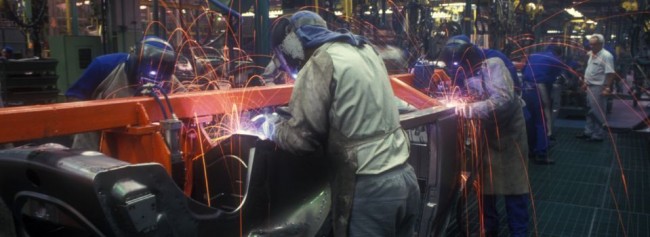Is Your Workplace Ripe for a Serious Injury?
The absence of injuries does not denote the presence of safety. In fact, a series of near misses indicates a problem in your safety management. Here are some important safety factors that identify whether your shop is at heightened risk of a serious injury or fatality.
Posted: January 10, 2013
Unlike others in your industry, you’ve never had a fatality at your location and you’ve gone years without a recordable injury. Are you good or just lucky?
This is a serious question for manufacturers who – after a series of near misses – must confront the chilling realization that the absence of injuries does not denote the presence of safety. Serious injuries and fatalities are alerting unsuspecting companies that all is not well with their safety management systems.
While tragedies of this stripe tend to be seen as unforeseeable acts of God, they are neither impossible to predict, nor the actions of a vengeful deity. In fact, with a little investigation, manufacturers should be able to identify when they are at heightened risk of a serious injury or fatality.
Most of these factors may seem, on the surface, to be unrelated to safety, but each one correlates closely to the system flaws that cause or contribute to worker injuries. In other cases, these factors can act as catalysts and hasten the likelihood of an injury or worsen an incident’s severity:
AN UNSTABLE PROCESS
Process variability is not only destructive to part quality and production efficiency, it also increases the probability that the employees themselves will be injured. Situations such as parts shortages, falling behind in schedule, or widespread inefficiency are key indicators of heightened risks of worker injuries.
Any good safety program should monitor these indicators as part of a balanced scorecard program. This requires the safety professional to understand the process to accurately assess the risk associated with the instability of certain workstation layouts, methods, equipment, tooling, noise, etc. The risk assessment will only be as accurate as their understanding of the process, so the safety technician should work closely with someone from operations or engineering.
LACK OF FORMAL PROCESSES
Another root cause of process variability is the lack of engineered process documentation. It might surprise you to learn how many manufacturers don’t have a single, standard way of doing a job. Employees are simply assigned a goal and expected to figure out how best to accomplish it. With no formal, correct way of performing a job, dangerous levels of variation can develop between the methods used by two different workers doing the same task. And where there is variation there is risk.
WEAK TRAINING
The best way to protect workers is to ensure that they have completely and accurately mastered the core skills associated with their jobs. Some manufacturers try to shortcut the employee on-boarding process and prematurely assign the workers to production. These unqualified candidates on the shop floor generate a substantial increase in risk, because untrained workers typically function at substandard levels and avoid injury by sheer luck.
Gaps in formal training or an overall weak training infrastructure are clear indicators of a risk that can deceptively increase to near-threshold levels whenever a manufacturer erroneously perceives they do adequate or even good training and ignore how their actual efforts are substandard and shoddy.
A formal training process should be rooted in needs identification – that is, training should be based on the gap between the actual skills that workers possess vs. those needed to properly perform their jobs. The characteristics of an effective training program are:
The effectiveness of training is regularly evaluated. This typically involves evaluations at four levels and the data derived from these assessments are used to make the necessary improvements to the courses.





